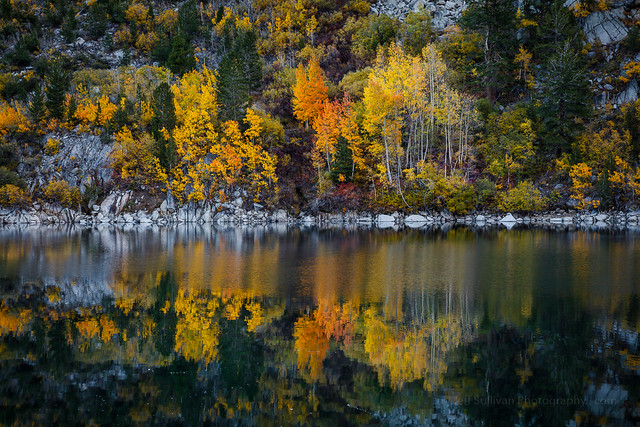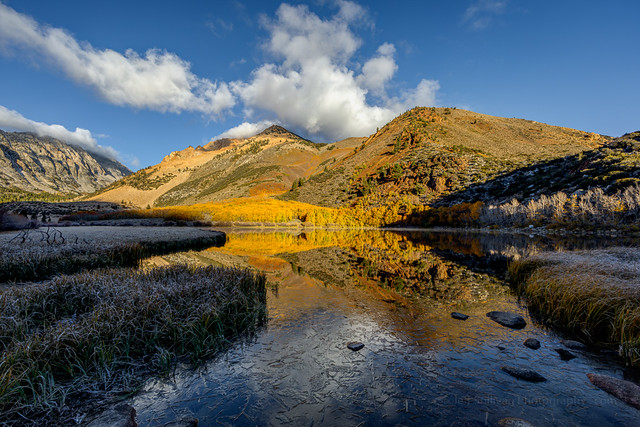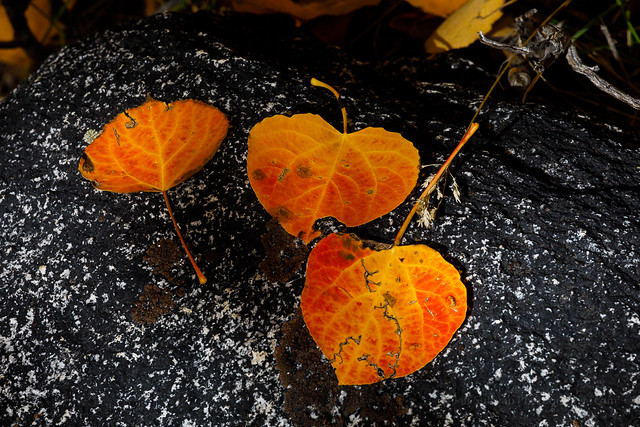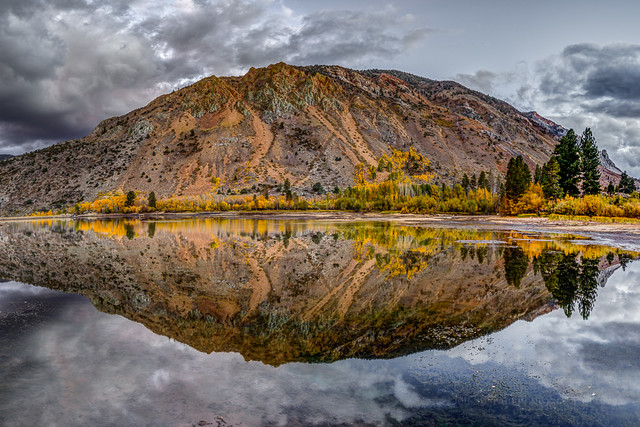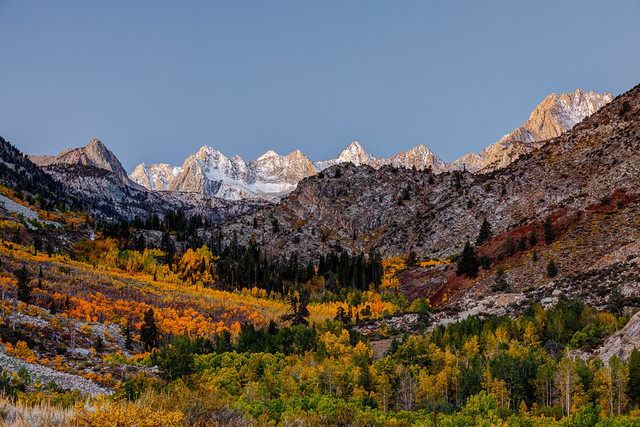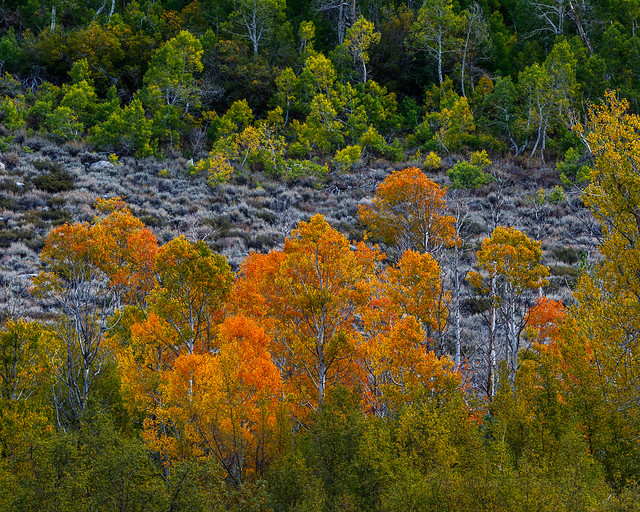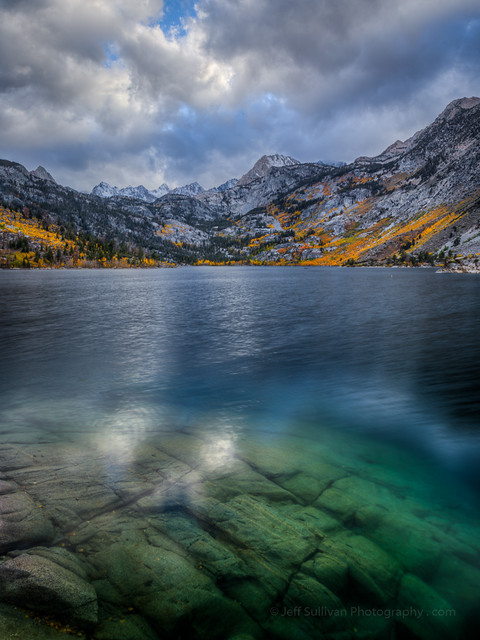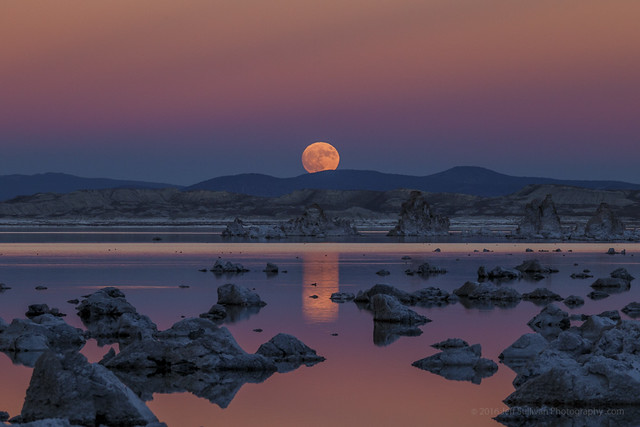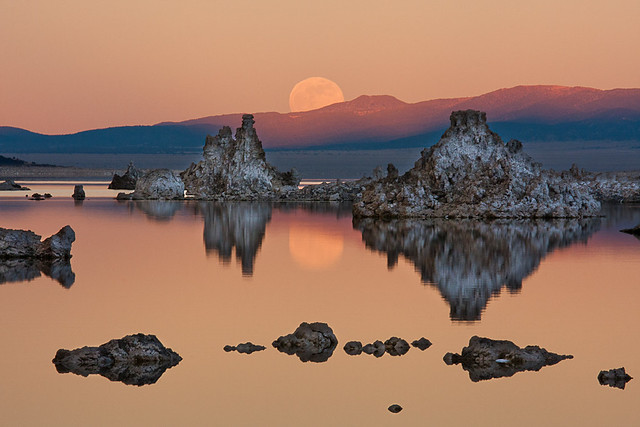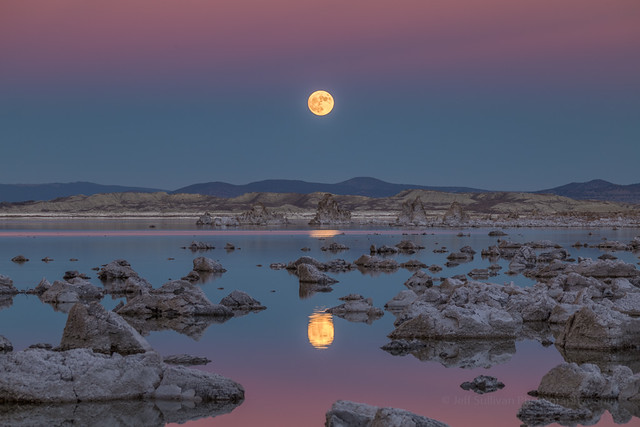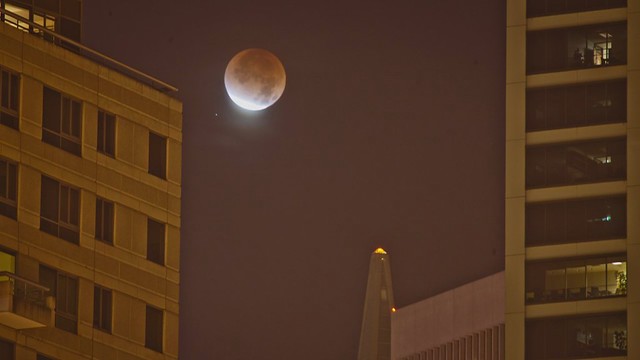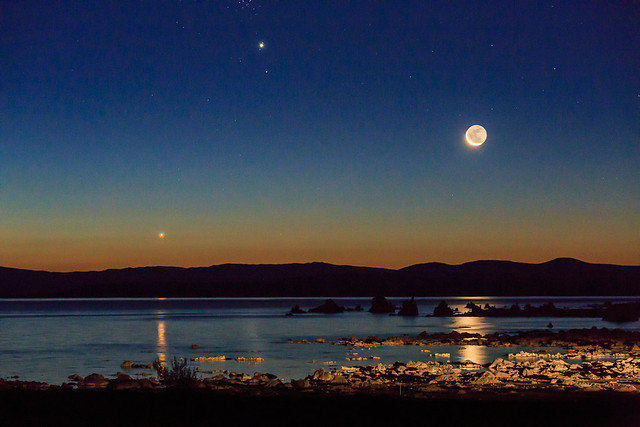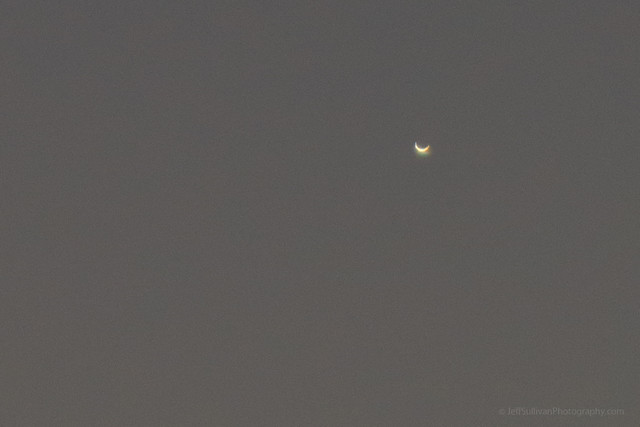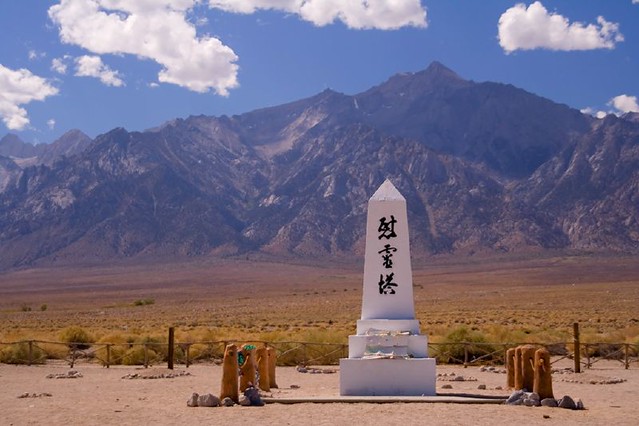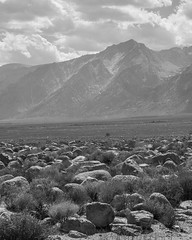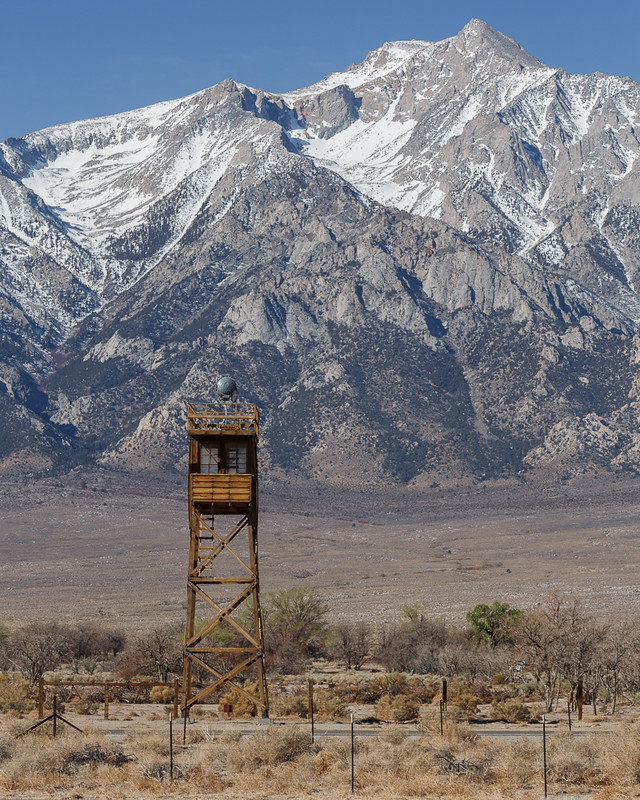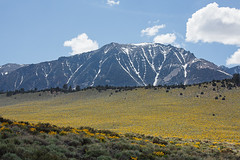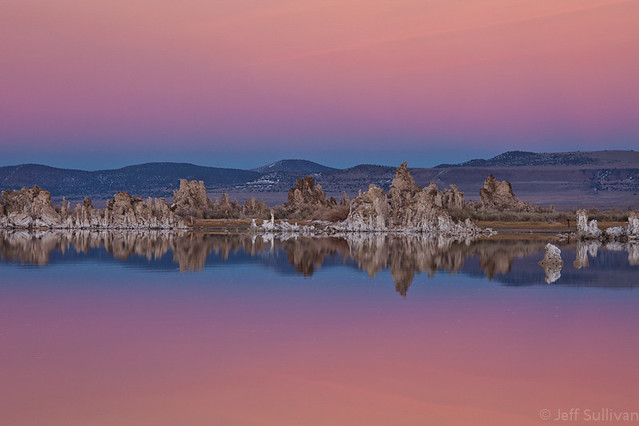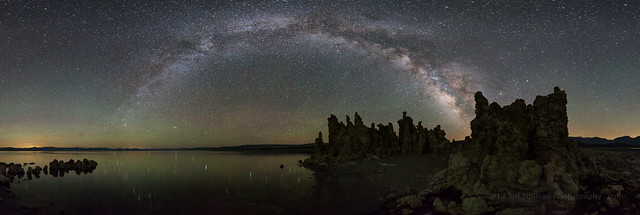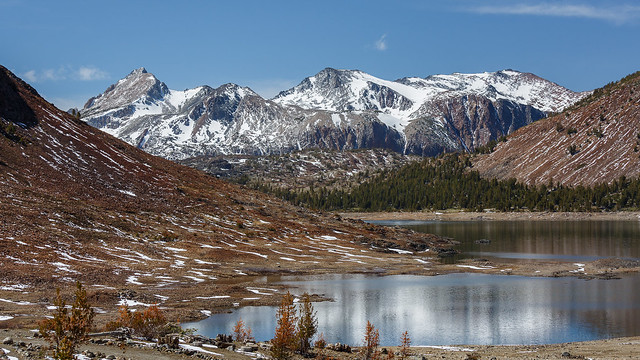 |
| The aspen trees are starting to leaf out |
My
early May blog post on spring Eastern Sierra conditions contained a collection of possible outcomes and opportunities for spring. I've been out a few times since then, checking the emergence status of various wildflowers, the water level at Mono Lake tufa sites (and their muddiness, since they form over springs), unpaved road access conditions, snow levels and lake iceout conditions around Tioga Pass, pond water levels and reflection opportunities in Yosemite's Tuolumne Meadows, bird and wildlife photography opportunities, and so on.
 |
| A quick snapshot on my iPhone 6S+ - good enough to show the arrowleaf balsamroot starting to bloom |

Wildflowers vary in intensity and timing from year to year, which is why I do these scouting trips before the workshop, and not while dragging customers around. Even knowing where various species can be prolific, checking the current year's status and timing involves many less than fully productive searches. Wild iris seemed to be a bit behind in timing. Mules ears have been starting to emerge over the past 2 weeks, and could peak in the next week or two. The few days of clearer, warmer weather in the forecast early next week could help them along. Paintbrush was doing well at low elevations but it is too early to tell how prolific it'll be at mid to high altitudes. Lupine were healthy in some areas and should still be available for another week or more a lower altitudes, and emerging at mid altitudes. Wild peach has been strong, and yellow bitterbrush has bloomed as enthusiastically as many local residents can remember (one even mentioned that this native must be a new invasive species), but the peak is now past for both. Isolated patches offered a variety of other species, sometimes dense, but you really have to search for them. I'll be back out over the next few days to see if some of the patches have increased in intensity, enough to warrant a visit during the upcoming workshop.
 |
| All of the photos in this post are from May 2016 |
The weather has been unsettled, great for daytime photography as but less conducive for many types of night photography. That's pretty typical for May, which is one reason why I only ran a couple of Bodie night photography workshops then, but currently focus more on June and later.

Some locations are on the wet and muddy side, not unsurprising for spring, but certainly good to know before you show up for a sunrise or sunset and can't access the compositions that you might have enjoyed in the past, in summer, fall, or simply a drier year. In other cases, a site might be more dependent upon long term trends, and the long term drought continues to provide cracked earth foregrounds. If you're shooting in one basin and the weather and light looks like it might be better 25 miles north or south, you can save an hour of driving if you know that the site that you have in mind isn't in great condition that week. Conversely, you can make your day, week or month if you know that a site is in great shape, and you arrive to find great light to complement the site's full potential. A good workshop is made great when you can "connect the dots" to consistently arrive at a series of good sites, in great seasonal condition, offering optimal lighting, while reacting to the day's weather conditions. There are no guarantees in landscape photography, and that's part of what makes it exciting, but scouting trips do resolve what would otherwise be unknowns in the mix, increasing the odds of everything coming together just right.
 |
| A quick iPhone snapshot is good enough to record conditions, break out the DSLR upon returning in better light |
The somewhat early opening of Tioga Pass is not surprising given a fairly dry month of February and the winter's overall normal to low snowpack (93% in the Mammoth lakes area, closer to 100% north of Tioga Pass). It has re-closed at times as moisture causes afternoon and evening storms, but it's open again now. Lakes are in various stages of losing their ice. Tenaya Lake was clear by the time the pass opened, Ellery may be completely clear now, Tioga was mostly frozen last week, so it may still hold some ice into next week. The terrain is complicated up in that area, so having spent many sunrises and sunsets up in that area is important to knowing what is likely to be productive, vs. a bust.


Tuolumne Meadows currently offers a lot of seasonal ponds. Determining ahead of time which of them provide decent compositions at current water levels helps keep the workshop moving efficiently. Many workshop leaders spend a lot of time and money marketing, and do a great job filling their workshops. Good for them. I prefer to spend my time in the field, develop extensive site and condition knowledge, and over time earn the reputation for delivering great opportunities and results.
It's important to me for my knowledge to include photographic technique and post-processing skill. Anyone can apply a filter in post-processing software or use a certain technique to make a landscape look wacky, and there's nothing whatsoever wrong with that, it it's the style someone chooses, rather than is trapped into through less than optimal exposure technique or lack of alternate post-processing workflow options. Getting through the end-to-end digital photographic process with realistic results is like walking a tightrope: bay far the easiest thing to do is to fall off. There are subtle things you can do all along the way to optimize results. You don't need the latest camera or software, it's more about fine tuning the various steps.
 |
| Backlit storm clouds at night |
Ansel Adams produced timeless results by producing heavily manipulated but seamlessly realistic results, while popular trends included hand-tinting photographs to add color. Most of us don't know the names of his contemporaries today. No doubt Ansel could have had great commercial success producing those colorized postcards, but any era's hot trends can look cartoonish years later, out of the unique social context of the time. We're not immune from that today: I have over-saturated digital photos from the mid-2000s, tonemapped HDRs from the late 2000s, and I've dabbled with luminance masking, color light painting, and lately software filters. I gravitate more realistic results, and for the experiments with various trends, I'm gradually re-processing many of the more over-the-top post processing results. It's useful to try a range of things to settle on your own preferred style, and to continue to try new things for variety and to see if you want to broaden your options for post-processing any given scene in the future. So I want to maintain a broad enough collection of experiences to be prepared to help photographers who want to expand their own skills.
While the goal of my pre-workshop explorations are mainly to visit locations to assess conditions, it'll be a fun challenge to line up the sites for great light and weather during the workshop next week.
 |
| iPhone 6S+ panorama |
With the storms in the past weeks I haven't been out for night photography as much as I would like, but we should have a great time in Bodie June 4/5, and I hope to be out a few times in the coming nights to assess a few new locations as well.


